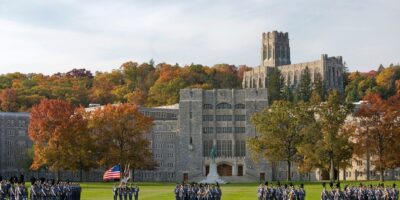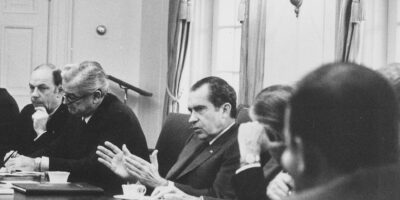The Strangely Unscientific Masking of America

I remember vividly the day, at the tail end of March, when facemasks suddenly became synonymous with morality: either one cared about the lives of others and donned a mask, or one was selfish and refused to do so. The shift occurred virtually overnight.
Only a day or two before, I had associated this attire solely with surgeons and people living in heavily polluted regions. Now, my friends’ favorite pastime during our weekly Zoom sessions was excoriating people for running or socializing without masks in Prospect Park. I was mystified by their certitude that bits of cloth were the only thing standing between us and mass death, particularly when mere weeks prior, the message from medical experts contradicted this new doctrine.
On February 29, the U.S. surgeon general infamously tweeted: “Seriously people – STOP BUYING MASKS. . . They are NOT effective in preventing general public from catching #Coronavirus.” Anthony Fauci, the best-known member of the coronavirus task force, advised Americans not to wear masks around this time. Similarly, in the earliest weeks of the pandemic, the CDC maintained that masks should be worn only by individuals who were symptomatic or caring for a sick person, a position that the WHO stood by even longer.
As rapidly as mask use became a matter of ethics, the issue transformed into a political one, exemplified by an article printed on March 27 in the New York Times, entitled “More Americans Should Probably Wear Masks for Protection.” The piece was heavy on fear-mongering and light on evidence. While acknowledging that “[t]here is very little data showing that flat surgical masks, in particular, have a protective effect for the general public,” the author went on to argue that they “may be better than nothing,” and cited a couple of studies in which surgical masks ostensibly reduced influenza transmission rates.
One report reached its conclusion based on observations of a “dummy head attached to a breathing simulator.” Another analyzed use of surgical masks on people experiencing at least two symptoms of acute respiratory illness. Incidentally, not one of these studies involved cloth masks or accounted for real-world mask usage (or misusage) among lay people, and none established efficacy of widespread mask-wearing by people not exhibiting symptoms. There was simply no evidence whatsoever that healthy people ought to wear masks when going about their lives, especially outdoors. Yet by April, to walk the streets of Brooklyn with one’s nose and mouth exposed evoked the sort of reaction that in February would have been reserved for the appearance of a machine gun.
In short order, the politicization intensified. President Trump refused to wear a mask relatively early on, so resistance to them was equated with support for him. By the same token, Democratic politicians across the board eagerly adopted the garb; accordingly, all good liberals were wearing masks religiously by the beginning of April. Likewise, left-leaning newspapers such as the New York Times and the Washington Post unequivocally promoted mask-wearing after that March 27 article, with no real analysis or consideration of opposing views and evidence.
The speed with which mask-wearing among the general public transitioned from unheard of to a moral necessity struck me as suspicious. After all, if the science was as airtight as those around me claimed, surely masks would have been recommended by January or February, not to mention during prior infectious disease outbreaks such as the 2009 swine flu. It seemed unlikely that the scientific proof became incontrovertible sometime between late February and late March, particularly in the absence of any new evidence surfacing during that time period.
Perhaps none of this is particularly surprising in this hyper-political era. What is shocking is the scientific community’s participation in subverting evidence that does not comport with the consensus. A prime example is the Institute of Health Metrics Evaluation’s (“IHME”) rather astounding claim, published in the journal Nature-Medicine and echoed in countless articles afterward, that the lives of 130,000 people could be saved with a nationwide mask mandate.
As my colleague Phil Magness pointed out in an op-ed in the Wall Street Journal, the IHME model was predicated upon faulty data: it assumed that 49% of Americans were wearing masks based on a survey conducted between April and June, while claiming that statistic represented the number of Americans wearing masks as of September 21. In fact, by the summer, around 80% of Americans were regularly wearing them. (Ironically, had Dr. Fauci and the Surgeon General not bungled the message in March, mask use probably would have reached much higher rates much earlier on).
This called into question the accuracy of the 130,000 figure, since many more people habitually used masks than the study presumed.
Although Magness contacted Nature-Medicine to point out the problem, after stalling for nearly two weeks, the journal declined to address it. Needless to say, the damage had been done: newspapers such as the New York Times undoubtedly would fail to correct the error and any retractions certainly would be placed far from the front page, where the initial article touting the IHME figure appeared. Thus, as expected, the unfounded claim that 130,000 lives could be saved with a nationwide mask-mandate continues to be repeated, including by president-elect Joe Biden and National Institutes of Health Director Francis Collins.
That the science behind mask-wearing is questionable at best is further exemplified by a letter to the editor written in response to Magness’s article. Dr. Christopher Murray acknowledged that rates of mask-wearing have steadily increased, but then concluded that masks should be used because they are “our first line of defense against the pandemic” and current IHME modeling indicates that “if 95% of U.S. residents were to wear masks when leaving home, we could prevent the deaths of tens of thousands of Americans” because “masks work,” and “much deeper pain is ahead if we refuse to wear them.”
None of this accounts for the failure of either Nature-Medicine or the IHME modelers to recognize and correct the error. Moreover, neither the IHME modelers nor Dr. Murray provide any evidence that masks work. They assume masks are extremely effective at preventing spread of the coronavirus, and then claim that the model is correct for that reason. This sort of circular reasoning is all-too typical of those who so vociferously insist that masks are effective without going to the trouble of substantiating that contention – or differentiating what is likely a modest benefit from mask-wearing in specific indoor locations and around high-risk individuals from the media-driven tendency to depict masks as a silver bullet for stopping the virus in all circumstances.
Coverage of a recent mask study conducted in Denmark likewise epitomizes the failure of the scientific community to rigorously engage with results that do not fit the prevailing masks-as-a-panacea narrative. The first randomized and controlled study of its kind (another appeared in May but it pertained to flu and had similar results), it found an absence of empirical evidence that masks provide protection to people wearing them, although it apparently did not assess whether they prevent infection of those who encounter the wearer. The report was covered in a New York Times article bearing the patronizing headline, “A New Study Questions Whether Masks Protect Wearers. You Need to Wear Them Anyway.”
Noting that the results “conflict with those from a number of other studies,” primarily “laboratory examinations of the particles blocked by materials of various types,” the author remarked that, therefore, this research “is not likely to alter public health recommendations in the United States.” Notably, laboratory examinations, as opposed to the Danish study, do not account for the realities of everyday mask usage by non-medical professionals.
The author then quotes Susan Ellenberg, a biostatistician at the University of Pennsylvania, who claims that the study indicates a trend: “‘in the direction of benefit’ even if the results were not statistically significant. ‘Nothing in this study suggests . . . that it is useless to wear a mask,’” according to Dr. Ellenberg.
Nor does anything in this study suggest that it is useful to wear a mask, a fact that Dr. Ellenberg (and the headline) conveniently ignores. Furthermore, if a result is statistically insignificant, it should not be used to make the case for any proposition — as even I, a layperson, know.
Scientists ought to dispassionately analyze data that contradicts their biases and assumptions, and be open to changing their beliefs accordingly. That the results of the only randomized, controlled study were and continue to be automatically discounted demonstrates that, when it comes to the subject of masks, anything approximating the scientific method has gone out the window. That is all the more evident given the lack of interest that mask proponents have shown in conducting a randomized, controlled study themselves.
An article in the Los Angeles Times went even further: it twisted the findings of the Danish study to argue, incomprehensibly, that the research demonstrated more mask-wearing is warranted. The author cited, as supposedly compelling evidence that masks work, the low Covid-19 death rates in Singapore, Vietnam, and Taiwan. Indeed, according to the latest YouGov poll, administered in mid-November, 83% of Americans now wear masks in public, higher rates than Vietnam (77%) and Taiwan (82%).
Furthermore, there are other explanations, apart from widespread mask usage, for the remarkably low death rates in these countries. Some scientists believe that previous exposure to other coronaviruses in these regions may confer partial or total immunity to SARS-CoV-2. Others have speculated that obesity, environment or genetics could be the reason that Europe and the United States have substantially higher death rates than many Asian and African countries; after all, obesity is one of the most significant risk factors for severe illness.
To conclude on the basis of low death rates in several countries that masks prevent coronavirus transmission is patently absurd, illogical, and unscientific. A casual observer might also note that coronavirus cases (albeit not necessarily deaths) are rising in many parts of the world, regardless of mask mandates or rates of implementation. While not a controlled experiment, this fact at least ought to be addressed when making such sweeping claims.
Ultimately, I do not have the credentials to determine whether or not –or to what extent — masks work. But it is obvious that the issue has become so politicized that mainstream media outlets, politicians, and even scientists seize upon the slightest bit of favorable evidence, dismiss out of hand anything that conflicts with their theory, and most egregiously of all misrepresent the data, to support the conclusion that masks worn by asymptomatic people prevent coronavirus transmission.
And masks are only one part of this story: school closures, lockdowns, and social distancing all have been dogmatically embraced as a means of controlling infection. The substantial evidence that these mechanisms are not effective, particularly beyond their duration, has been automatically rejected for too long. This is not science: it is politics, and those within the profession who have refused to examine their confirmation biases, or manipulated the evidence to score political points, are utterly unqualified for the job.










